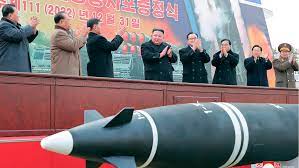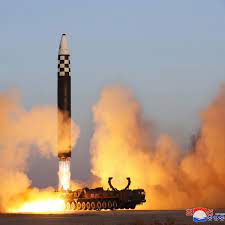North Korean waterway authorities told Japan’s coast guard the launch window is between May 31 and June 11
President Biden spoke at a joint press conference with South Korean President Yoon Suk Yeol on Wednesday, April, 26, 2023, where he said a nuclear attack by North Korea against the U.S. or allies would be “unacceptable.”
North Korea informed neighboring Japan on Monday that it plans to launch a satellite in the coming days, despite the United Nations prohibiting it from engaging in such activity.
Japan’s coast guard said North Korean waterway authorities revealed that the launch window was between May 31 and June 11 and that the launch may affect waters in the Yellow Sea, East China Sea and east of the Philippines’ Luzon Island.
A safety warning was issued by Japan’s coast guard for ships in the area on those dates due to the possible dangers of falling debris. The coast guard coordinates and distributes maritime safety information in East Asia, which is most likely why it received North Korea’s notice.
For North Korea to launch a satellite into space, it would need to use long-range missile technology banned by U.N. Security Council resolutions. The country’s previous launches of Earth observation satellites were viewed as missile tests in disguise.

A TV screen shows a file image of North Korea’s rocket launch during a news program at the Seoul Railway Station in Seoul, South Korea, on May 29, 2023. (The Associated Press)
Japan’s Chief Cabinet Secretary Hirokazu Matsuno said the launch would be in violation of U.N. resolutions and is a “threat to the peace and safety of Japan, the region and the international community.”
Defense Minister Yasukazu Hamada instructed Japan’s Self-Defense Force to shoot down the satellite or debris if any entered Japanese territory.
Matsuno said it was possible the satellite would enter or pass above Japan’s southwestern islands. This would include Okinawa, where the U.S. has major military bases and thousands of troops.
Japan has been on standby for falling missile debris following North Korean launches earlier this year. The country has also deployed missile defense systems and ship-to-air interceptors in its southwestern region.
Prime Minister Fumio Kishida’s office said he ordered officials to gather and analyze information related to the launch in order to notify Japanese people of it.
North Korean state media reported earlier this month that leader Kim Jong Un inspected a finished military spy satellite at his country’s aerospace center and approved its launch plan.
























